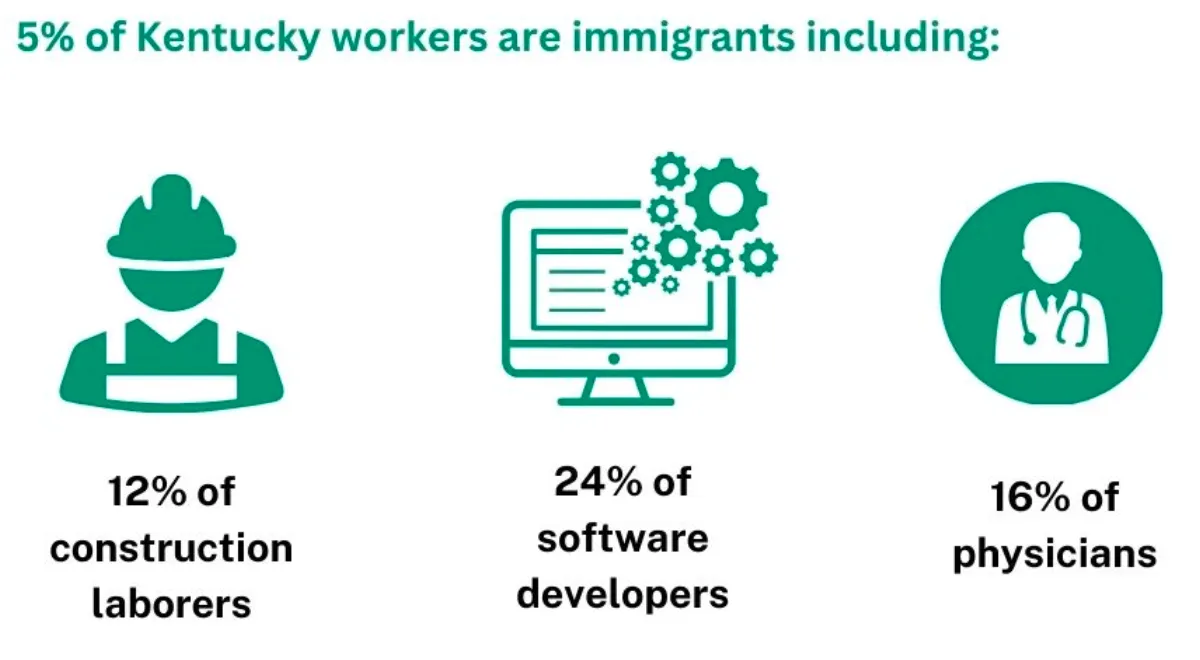Table of Contents
Rural young voters continue to feel ignored in politics as the presidential election intensifies, according to research this spring from the Center for Information and Research on Civic Learning and Engagement (CIRCLE).
Described as the least contacted and most undecided demographic by the Rural Youth Voter Fund, their participation in the upcoming presidential elections could be critical in deciding the next four years and beyond. In swing states during the 2022 midterm elections, youth made up 10% to 15% of all votes cast, according to CIRCLE, large enough to change outcomes.
“There’s this huge opportunity to engage with young people [and] to give them the opportunities to learn more about the system and make their mark,” said Michael Chameides, communications director of the Rural Democracy Initiative, which helped to create the Voter Fund.
The Voter Fund supports local youth-led initiatives and brings together leaders interested in civic engagement. Chameides noted the most successful initiatives are relationship-focused and allow young people to become leaders and reach their peers. Initiative projects are also dependent and modeled on their local communities and relatability, based in schools and popular events.
“You have leaders who genuinely care about the people around them and instill an organizational passion for supporting other people and building those relationships,” Chameides said. “They're using language that resonates with their peers and makes sense to their peers and feels natural. A lot of people are driven by a certain desire to make their lives better and to make their families’ lives better and make their community’s lives better. … In a lot of communities, skating is really popular, and so maybe there’s skate to the poll events. Knowing your audience and doing things that are both fun and meaningful is really powerful.”
Having places to engage in issues is crucial for turnout, according to suggestions for rural youth voter empowerment by CIRCLE. Although civic information access is similar across geographic regions, rural youth were less likely to feel there were comfortable places to engage with that information. That lack of support translated into lower voter turnout: rural youth – aged 18 to 29 – voter turnout was 44% in rural counties compared to 52% in urban counties, according to the spring research from CIRCLE.
Alejandro Rangel-Lopez is a 23-year-old campaign manager at New Frontiers, a project from Loud Light that empowers young Southwest Kansans to build community power. He organizes meetings to help young voters develop leadership skills in places he can find such as community centers and bubble tea shops. However, he finds there are less opportunities for voters to engage with and learn about the issues closest to them in rural areas or smaller towns such as Dodge City and Garden City.
“We get all our news from Wichita,” Rangel-Lopez said. “We know what’s going on at the state and national level, but we don't know what’s going on a block or two away.”
Additional reports reaffirmed the importance of infrastructure in voting turnout, showing infrastructure was tied to a sense of belonging that excited voters. Courtney Smith, director of voter engagement at Forward Montana, also noted voting barriers specific to rural communities. Online voter registration is not allowed in Montana, which presents a significant challenge if people need to drive 100 miles to the nearest election office in Gallatin County.
“If folks are miles and miles apart, it’s harder to bring folks together,” Smith said. “But we do have programs where we try to reach people still at home. For example, we host a voter registration drive in high schools called Democracy Days, where we’re able to have a host on site who registers students at the high schools and the local libraries within communities in rural parts of Montana so that they still have access to voting even if they’re far away.”
Kathleen Alonso, also a community organizer with New Frontiers based in Liberal, Kansas, has encountered challenges in creating cultures around volunteer advocacy. By investing in leadership development and hosting fun events such as a Sip and Paint, she’s hoping to make organizing for affordable housing and fair cost-of-living more accessible and break stereotypes of youth as unengaged voters. Alonso pointed to an isolation factor in her personal experience with finding peers interested in similar issues and politics.
“In my experience and with the people I’ve connected with, we feel isolated in our areas and across the state when it comes to other issues,” Alonso said. “When it comes to economic issues, a lot of the time we hear Wichita and Kansas City on the radar. People a lot of the time tend to forget Southwest Kansas, Liberal, Garden, and Dodge.”
Claire McCoy, an organizer with Down Home North Carolina and a student at Appalachian State, agrees reducing stigma around young people not being engaged in politics will help turnout. She became involved in Down Home as a way to have an outlet for nonpartisan, working-class organizing for housing and healthcare accessibility. Although she encounters mixed political views while canvassing, her peers are highly engaged with issues close to them.
“The issues that affect everyone affect young people at an expedited rate,” McCoy said. “We're going into and trying to live in a world that we won’t thrive in, and we need rent caps and more healthcare in rural areas.”
In Boone, where McCoy grew up and lives, 75% of homes are rentals, compared to 35% for the state and national average, impacting students and young people less likely to own. Although Down Home was not able to pass rent caps, they did achieve funding for low-income housing weatherization and helped secure two homes for recovery housing. They worked with other local nonprofits to do this, such as WAMY and the Mediation and Restorative Justice Center, which McCoy says is crucial for reaching people across rural counties and keeping them engaged.
“I think with young people, they sometimes don’t feel they can help or doing things in the community doesn’t seem like enough,” McCoy said. “I think that's a narrative that needs to change. … I do believe part of the reason Watauga County struggles to retain young people is lack of economic and housing opportunities. Most people want to stay and be involved in the community but it’s not a viable option.”
Forward Montana engages young Montanans to advocate for issues they care about. Through polling, they’ve noted affordable housing, climate change, inflation, and reproductive rights as paramount. Smith said focusing on change at the local level can increase accessibility and engagement. However, both on the local and national level, youth feel ignored and disillusioned with politics.
“They feel like they’ve been dismissed by a lot of politicians in the things that they’ve heard and the things that they want aren’t actually coming to fruition,” Smith said. “A lot of young people feel frustrated, especially by the two party system, and disillusioned with that.”
However, Smith said Forward Montana has noticed more energy around voting from young people since Biden dropped out, largely because of Harris’ younger age and increased relatability. But above a particular candidate, Smith noted young voters care less about party systems and more about issues. She hopes they will increasingly be treated as persuadable voters who don’t identify with a party.
“Young people’s issues that they care about are important, both at the state level and the national level, and their ability to feel heard and listened to and valued by politicians is vitally important to making sure that they stay engaged and active citizens and participants in the future,” Smith said.
Rangel-Lopez has seen a “night and day” shift after Biden dropped out. A despair he noticed before has transformed to energy and joy for voter mobilization. The most discussed issues among the Southwest Kansans they work with are reproductive rights, LGBTQ+ protections, and immigration protections, especially given the majority minority population of the area. He has also seen increased interest in preserving and shaping local communities, especially around stopping “brain drain” and fresh water decreases.
“We’re becoming the adults in the room. No one else is gonna figure this out for us,” Rangel-Lopez said. “It’s both exciting and scary for a lot of folks, but we take it one step at a time.”
“A lot of people see their futures in the communities that they’re in,” Chameides said. “I think that place-based thing is a big motivation. It is a sense of ‘I want to be in a place that is livable and have opportunities to thrive in those communities.’”
--30--
Written by Lucy Tobier. Cross-posted from the Daily Yonder.







